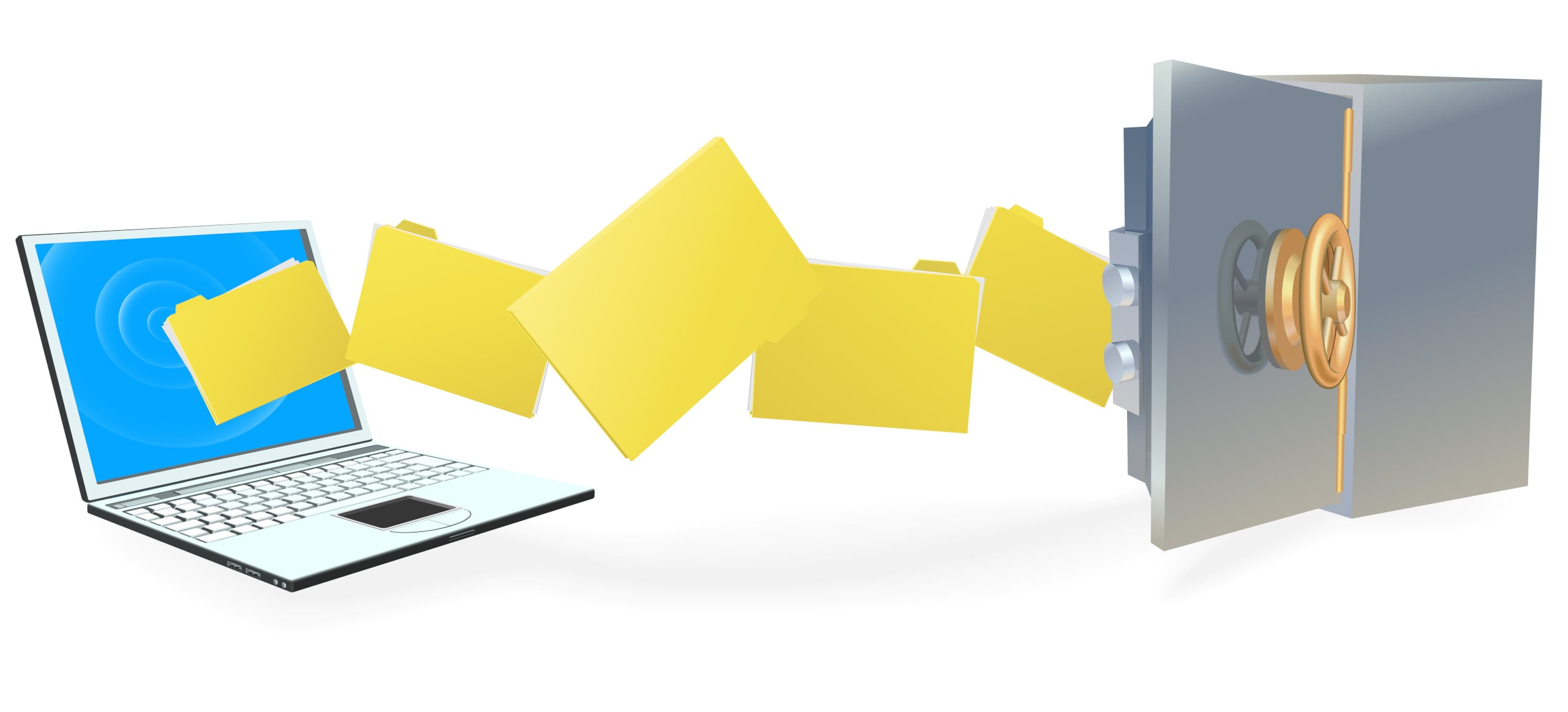Ensuring efficient and secure file sharing is becoming more and more important. Since the world becomes dependent on data progressively, receiving and sending files efficiently and securely is essential to various business processes such as team productivity, internal communication, and enterprise security.
However, it’s unfortunate that some businesses don’t employ file-sharing protocols. What’s more, their subpar transfer approaches limit file sizes, slow the transfer of digital data, even cap the total number of transmissions. Thus, often, information security is threatened and workflows become less efficient.

Fortunately, there’s no shortage when it comes to solutions. Read on and get to know more about the best and top practices you can implement to guarantee efficient and secure file sharing.
1. Use complex passwords.
With regard to cybersecurity protections, your password is one of the greatest weaknesses.
To protect access to all of your protection, you will need to have strong or complex passwords.
These days, using a password like “12345678”, “Pass1234”, “Pa$$w0rd” are no longer beneficial. In fact, even hackers using the most basic tool and brute forcing common lists can hack such simple passwords.
To keep your information secure, complex passwords are necessary. When making a password make sure it’s a combination of symbols and lowercase and uppercase letters. Also, it should be eight characters minimum. If possible, use a series of numbers that aren’t related or terms that aren’t available in the dictionary.
On the other hand, you shouldn’t use the same password for multiple accounts. Because once the hacker guesses it, they now have access to all your websites, thus keeping your information safe becomes even more difficult. So, make sure to use unique passwords to all sites as well as accounts your employees can access.
2. Use secure file transfer software.
Today there’s plenty of reliable and safe secure file transfer software. Actually, this secure file transfer software can offer numerous benefits. With such software, you can instantly, easily, and conveniently share and access files between peers. In contrast with your rivals, you can significantly reduce the workload and time that you can use to focus on other important business processes. Additionally, to store big-sized virtual files, you’ll need to have enough IT systems and infrastructure. With secure file-sharing software, you’ll be able to save considerable money to maintain infrastructures for easy transfer and storing of files.

When you’re planning to integrate a secure file-sharing software, make sure it fits your whole security strategy. As mentioned, there are plenty of options to choose from, thus being overwhelmed is too easy.
If possible, your file-sharing software is part of an integrated, secure, and bigger system. But if not, then the high standard present in this solution may be excluded, email communication for instance. This may leave your organization weak regardless of the efforts you’re doing. But when you use an integrated system, you can make things manageable which lessens the possibilities of a security breach because of human error.
3. Restrict the use of USB.
When sending bigger files from one place to another, using USBs is one of the first things that comes to the mind of many. But know that these devices are secure only if you don’t lose them. The most unfortunate thing is that you don’t have any idea where to find them, especially when you lose them in public areas. The worse part here is that if a malicious individual gets the USB, they can easily access all your data or information. So, to lessen the likelihood of this problem, it’s best to restrict the usage of USBs.
4. Train your staff about efficient and secure file sharing.
It’s very easy to ignore practices for efficient and secure file sharing with busy schedules as well as the crushing pressure to deliver. But these mistakes can be very expensive and may badly affect your organization.
To ensure that these happenings never occur, it’s crucial that you educate your staff about file sharing. Allow them to have a better and clearer understanding regarding the involved risks once the information is handled inefficiently and incorrectly. Consider categorizing the data or information your organization is handling. Then explain the security level every class requires.
Moreover, you need to ensure that your entire team is well-trained and knowledgeable in using the solution you adapted. When you fail to do this, your staff will surely fall back solely depending on their knowledge, wherein sometimes may not align with the efficient and secure file sharing policy of your organization.
5. Use VPN.
Because of the COVID-19 pandemic and the increasing trend of flexible working, workers are no longer restricted to work in the office. But there’ll be a heightened usage of public networks that aren’t secure, most especially if the worker decides to work from a public place.
While you can’t control where your remote workforce choose to work, you can advise them to connect to these networks via a virtual private network (VPN).
A VPN can make a secure tunnel for data or information passing through when being shared or transferred online. It makes it much harder for a hacker to access the transferred data.
6. Avoid sending files through email.
Another top practice for efficient and secure file sharing is to avoid sending files through email. When sending a file via email, you can’t protect them from download to upload by other parties. Know that an email doesn’t give enough level of security, and this makes it easier for hackers to interrupt the data in transit.
Even though, the files safely arrive at their destinations, that doesn’t guarantee that they will remain secure.
When sending a file through email, four copies are actually made — one in the sending server, one in the receiving server, one in your outbox, and the copy arriving in the recipient’s inbox.
It means, there are four copies exposed to hackers.
7. Be careful of bring your own device policy.
Bringing your own device to work is one of the most common cybersecurity threats many organizations are dealing with. Sure, bring your own device policy can offer a lot of benefits. For instance, it lessens the learning curve around utilizing technology. It even offers access to work from any place.
Nevertheless, whether it’s one’s own phone, laptop, or tablet, such devices are simply another channel for hackers to threaten a file transfer. When your employees strictly stick to your corporate phones and computers, as employers, it’s much easier for you to control and facilitate a secure file transfer.
8. Update passwords.
Did you know that the battle in order to keep passwords safe happens on two facades? Having complex and strong passwords as well as updating them on a regular basis. Once you’ve made passwords, you need to make sure that you update them after 3 months. In fact, this will offer you the impression of more powerful security while perpetrating needless pain, expense, and most importantly, a further risk to your organization.
Some cybercriminals or hackers can have access to your networks for a while before they are detected. As a matter of fact, the average number of days hackers reside in networks before they are detected is almost five months.
But when you’re changing your passwords frequently, this makes it more difficult for a hacker to access your accounts. When it comes to your passwords, you need to remain vigilant. You can even deter the most experienced hackers by updating your passwords regularly.
9. Review your files before sharing.
This is beneficial whether you’re sharing files with someone outside or inside your organization. You don’t want to unintentionally send irrelevant documents or worse, inappropriate for intended receivers. For instance, you may send the document of a client to another client unintentionally. This may cause the receiver to doubt how you’re handling their data. So, before hitting the send button, make sure to review the content first.
10. Regularly review security groups.
When your organization is evolving, keep in mind that it needs to evolve too. Business changes may affect your security group. For instance, a restructuring may result in reformed organizational hierarchies. On the other hand, there may be a necessity for a new security group or at least some modifications to your old groups.
Likewise, your organization can add new departments that require additional security groups. However, for example, the new department has a crossover activity with another department like customer service. The new department needs to access some documents from the customer service, having said that, you’ll have to reconsider the structure of your security teams.
Conclusion.
Efficient and secure file sharing is one great way to access information or data across devices and networks without risking any confidential information. To keep your information locked down and safe from hackers, consider implementing the above-mentioned top practices. Remember, having secure as well as efficient file-sharing will allow your business or organization to run smoothly. Make sure you’re taking the right action to protect your information while empowering your workers to do the same thing.
Leave a Reply